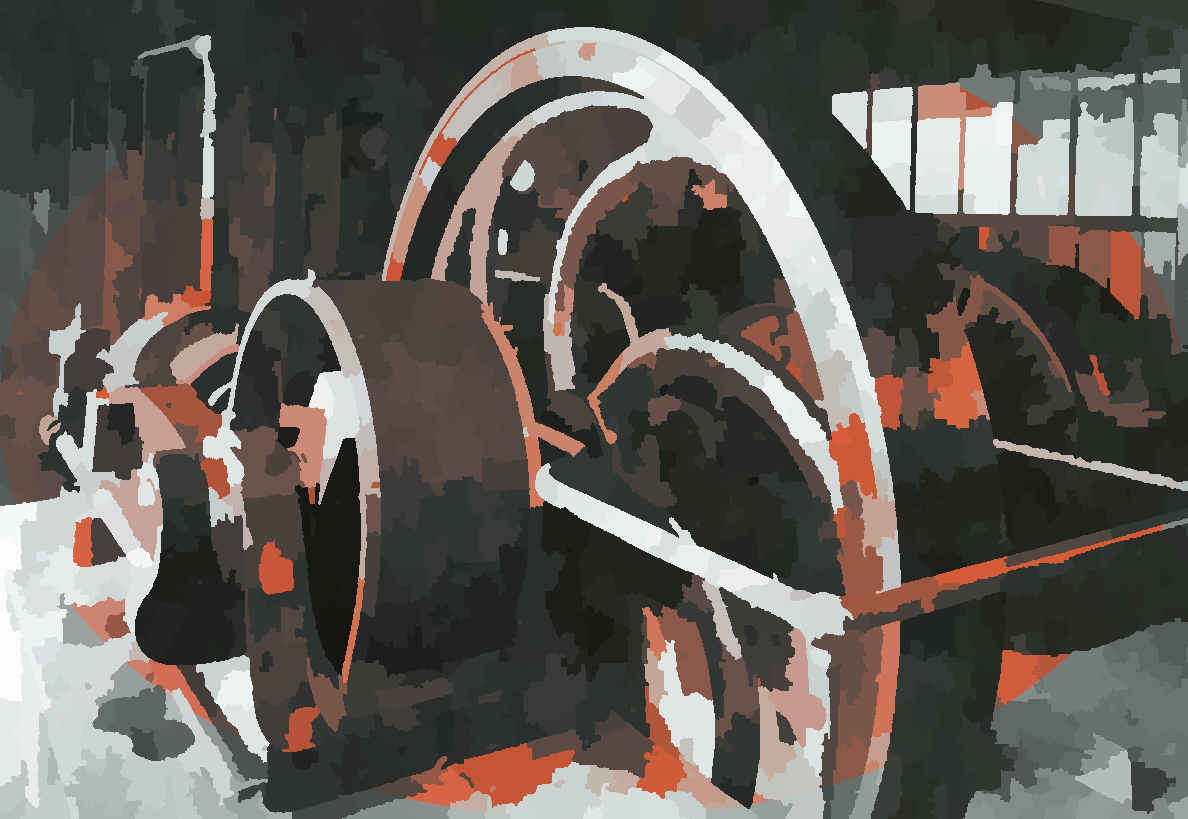|
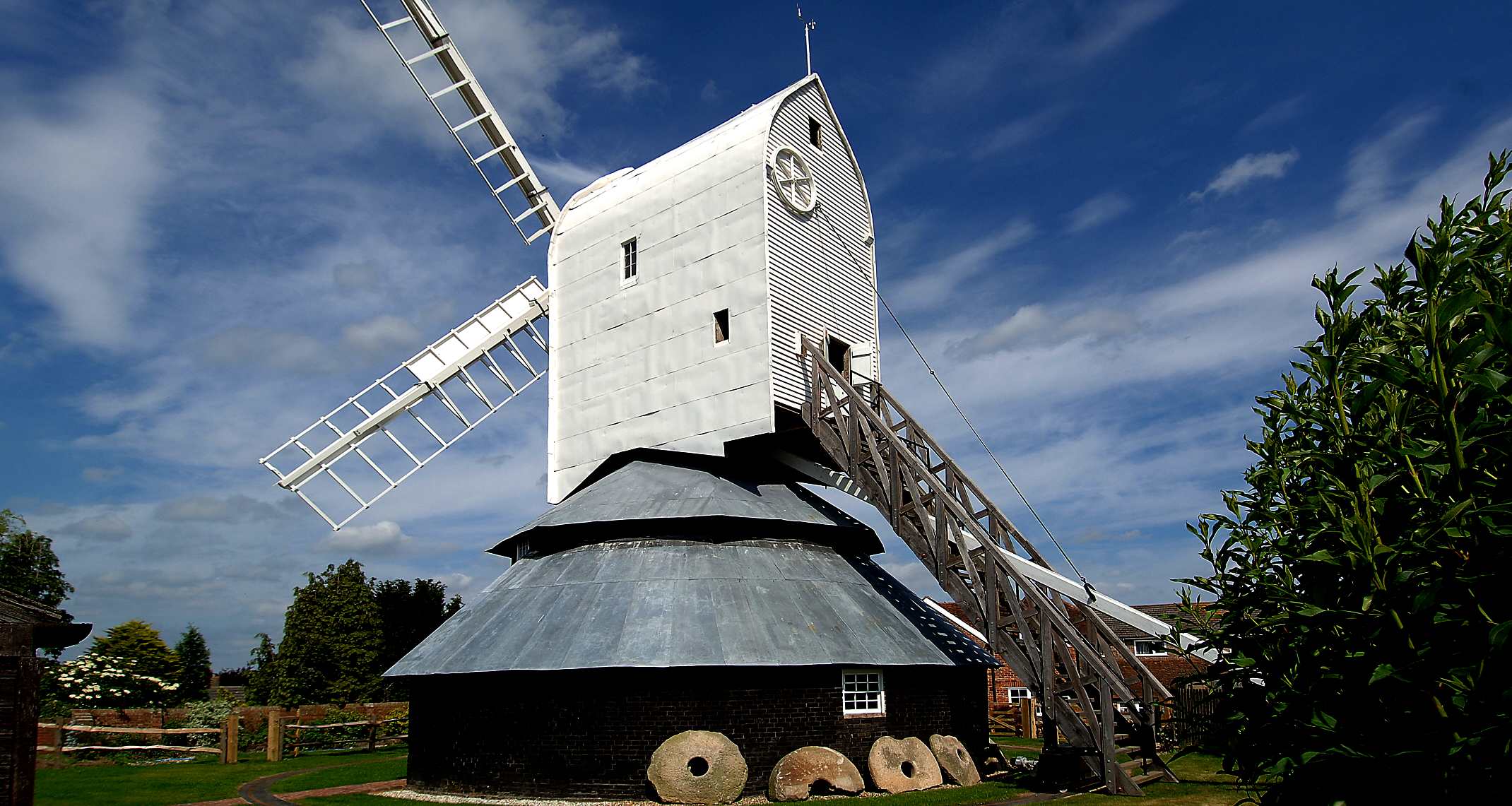
AMAZING
- The amount of work that has gone into restoring this fabulous post
mill, has cost over £1 million pounds, but as you may agree, it has
been well worth the effort.
The
post windmill at Windmill Hill, along the A271, is important to
understand the interaction between the Honeysett Brothers Gardner Street,
the village high street of Herstmonceux, and the Electricity Generating
Station in Lime Park.
What
is also of interest, is that at least some of the flour for the bakery
in Herstmonceux village, was milled by the
post windmill at Windmill Hill. Joining the historic post mill, that pre-dated the Generating Station, with the Bakery in Herstmonceux
village. Thus, three historic buildings are joined at the hip, to some
extent. The level of cooperation, we may never know, but are keen to
find out as much a possible, if anyone knows of anything that may help.
We
can also surmise from the Affidavit of Ronald
Saunders, that a Mr Harmer ran the windmill at Windmill Hill, and
that he had a bakery, which may be the Post Office store today in the
village of Windmill Hill, or may have been the bakery in Herstmonceux
village, whether owned or operated by the Honeysett brothers. According to Ron Saunders, in
1936, Mr Weaver was the head baker of Mr Harmer's bakery. As a lad, Ron
Saunders would sweep his bakery rooms after the days baking, to get a
special loaf, as a reward.
Windmill Hill Mill was built c. 1814 by William Medhurst, the Lewes millwright. It was working by wind until 1893, when it was stopped owing to a weak
weather beam. It is the largest post mill in Sussex, and is unique in that it is fitted with Hammond's Patent Sweep Governor, a feature previously fitted to Jack Mill, Clayton.
After work by wind had ceased, milling was continued by means of a steam-powered mill set up in the roundhouse.
Otherwise, flour could not have continued to be provided to bakers
locally. Though, it is unclear, for just how long this arrangement
lasted, until overtaken by larger flour providers.

That's
better. From a ruin to a listed monument. Inspiration for Herstmonceux
Museum, aiming for UNESCO listing.
WINDMILL
HILL TRUST
The windmill opened for visitors on Sunday 14th May 2023 – as part of National Mills Weekend. According to their website, the site is now open every Sunday and Bank Holiday Monday until the end of September.
In 2023, the sweeps were replaced at a cost of £60,000.
The windmill is the tallest post mill in Sussex and is a Grade II* listed building. It was built in the 1800s and restored 200 years later.
Groups, including cycling and walking groups are welcome to visit by prior arrangement. School groups are very welcome and
there is educational material for 7-11-year-olds.
To keep up-to-date with what is happening at the windmill, you can follow them on Facebook.
The Trust rely entirely on public support to maintain and run the windmill. Some ways you can support them are by becoming a Friend, volunteering, using their shop, joining the 100 club, or making a donation, and offering practical help.
If you run a group, club or society and would like the Trust to come to talk to you about the windmill, visit their website for more information:
https://windmillhillwindmill.org/
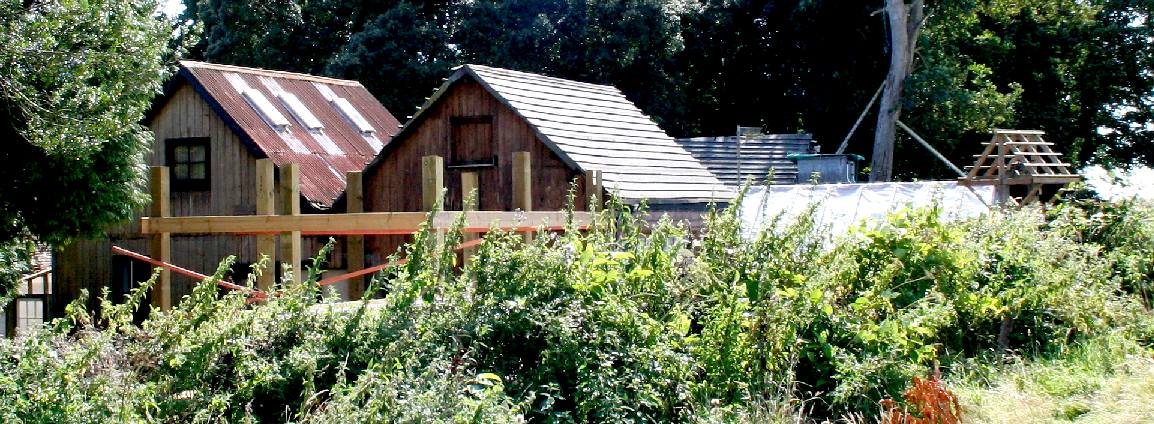
This
electricity generating station in Lime Park, supplied power to
Herstmonceux Bakery in the village. It is thought that flour was milled
at Windmill Hill, and supplied to the Honeysett brothers, for their
machine baking of loaves, rolls and pastry confectionery.
MORE
ABOUT THE WINDMILL
Windmill Hill post mill, the largest post mill in the south east, was built in 1814 with a single storey roundhouse. It was once owned by the Hammond family who were also millers at Clayton windmills. Alongside his duties as a miller, Charles Edwin Hammond invented a device to regulate the speed of the mill’s sweeps. He patented the 'sweep governor' in 1873 and installed one in Windmill Hill. It was one of only two made; the other has not survived.
During its life the mill was raised in order to catch the wind better. It is thought that the present two storey roundhouse was also built at this time. The roundhouse served both as protection for the timber trestle against the weather and also as a storage area for grain and flour. The roundhouse also has a 'second skin' around part of the mill which acts as extra storage. The mill has weathered several severe storms, including the hurricane of 1987 during which another Sussex post mill was blown over and destroyed.
RESTORATION
In 1994, a supporting steel framework was placed around the mill, and the remaining iron sheeting that clad the breast and sides of the mill removed. The tail of the mill was clad in plywood to keep the weather out. A trust was set up in 1995, aiming to prevent further deterioration in the condition of the mill, and to assess options for restoration. The Heritage Lottery Fund agreed in principle to support the restoration work. English Heritage funded the study to produce an application for lottery funds to restore the mill.
A detailed study of the mill was made in the summer of 2000. IJP Millwrights of Binfield Heath were contracted to restore the mill. A grant of £570,000 towards a total restoration cost of £770,000 was made in December 2001, this being the biggest single Lottery grant to an individual windmill. The mill was dismantled during November and December 2003, and taken in sections to IJP's workshops in Oxfordshire. Modern millwrighting techniques, including CAD were used in the assessment of the structure of the mill in preparation for the rebuild. It was found that one of the quarterbars in the trestle would need to be replaced due to damage done by Death Watch Beetles.
The rebuilt frame of the mill was lifted back onto the main post on 7 September 2004. The sails were fitted to the mill between 24 November and 3 December 2005. The restoration took two and a half years to complete.
On 19 November 2014 the Heritage Lottery Fund announced the grant of £80,800 for restoration of machinery and sweeps to grind flour. On 5 November 2015, the full patent sweeps turned again for the first time in 120 years.
MILLERS
Beeney 1845 - 1877
Charles Edwin Hammond 1878 - 1887
Henry Harmer 1887 - 1913 (said to have a bakery past 1936)
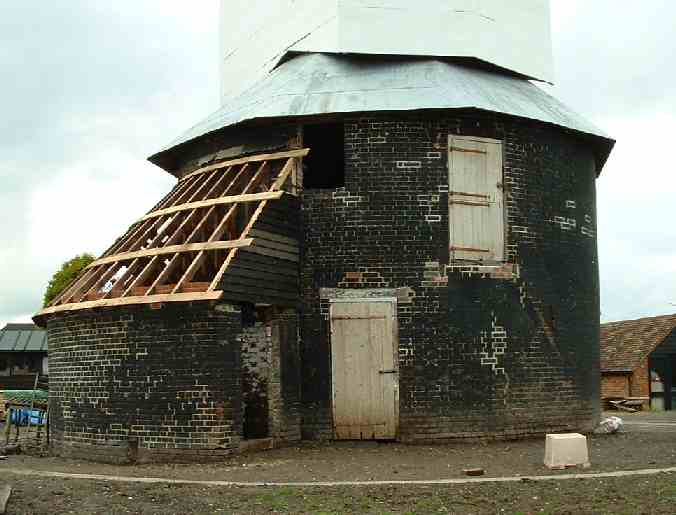
The
round house, where equipment and ground flour was stored
The mill stands 15.5m (50ft 10ins) from ground level to the roof ridge. The weatherboarding on the mill body is covered in metal sheeting, looking as it did was when it last worked. Originally the mill was turned manually to wind by a wooden tail pole, this was replaced by a computer controlled automatic turning device installed at the base of the exterior ladder. Today the mill has four patent sweeps which can be adjusted simultaneously while the mill is working by operating a chain at the rear of the mill. The mill was set up with two sets of stones; a pair of Derbyshire peak stones in the head of the mill and French Burr stones in the rear or tail of the mill. When the mill’s sweeps were removed in 1894, the Derbyshire stones were also removed to the roundhouse and set up to work by steam power.
After standing derelict for over a century the Grade II* listed mill made headlines when it became the largest and most ambitious repair project undertaken in the UK. All of the mill’s timbers were recorded before the main body was transported for repair to the millwright's yard in Oxfordshire. The restoration took two and a half years to complete.
NGR TQ 647 121
- Latitude/longitude 50.88540000, 0.34026900
Windmill Hill post mill is run by the Windmill Hill Trust.
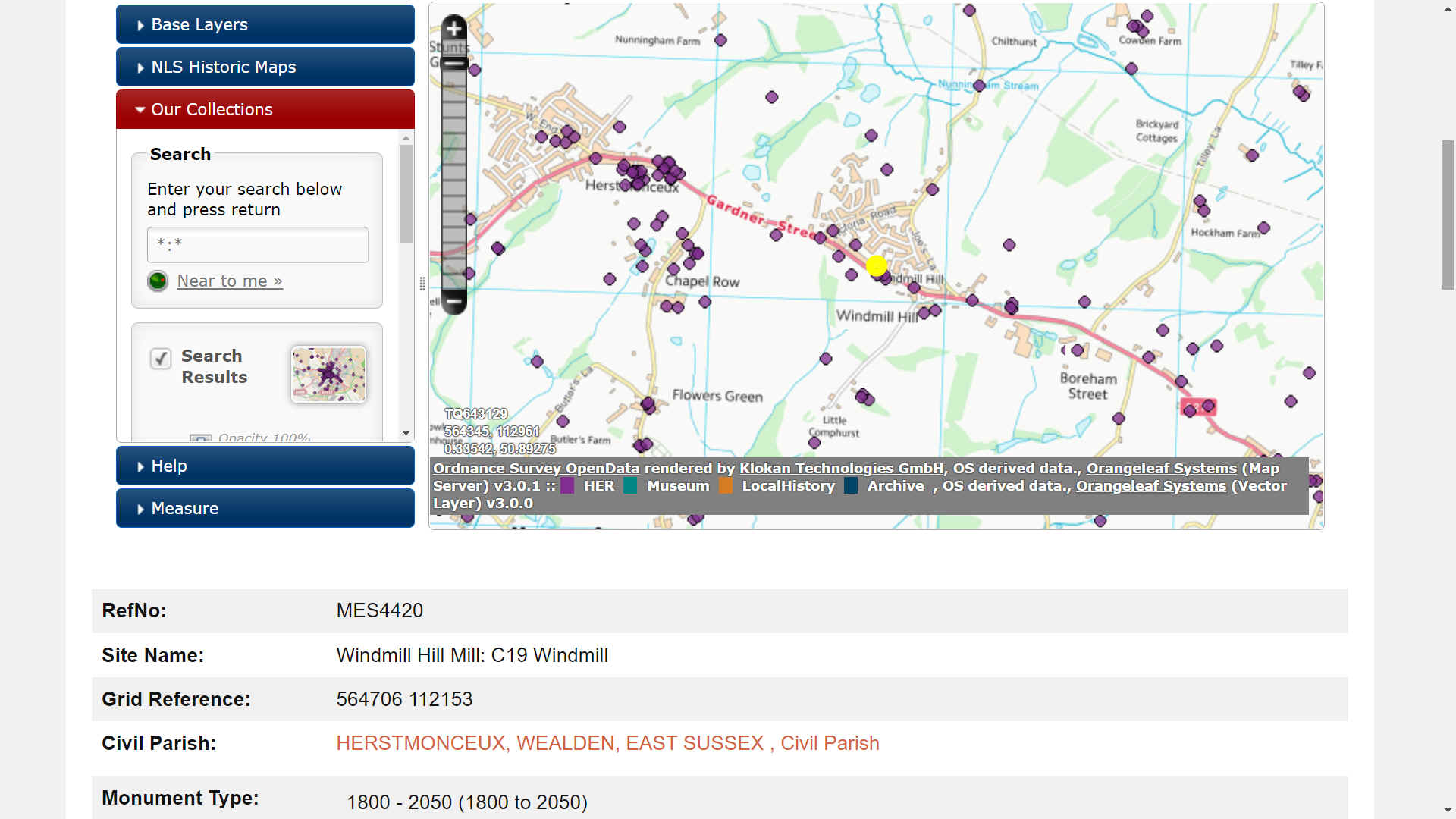
EVENTS
2016 - 2023
Monday, February 20th, 2023 - Music at the Mill, Sunday 6th August
Monday, July 4th, 2022 - Music and afternoon tea at the mill, 7th August 2022
Thursday, June 30th, 2022 - Music at the windmill, 3rd July 2022
Thursday, June 30th, 2022 - Herstmonceux Cubs visit the windmill, June 2022
Wednesday, January 27th, 2021 - Newsletter No. 51 – Autumn 2020
Friday, January 3rd, 2020 - Newsletter No. 50 – Winter 2019
Friday, May 17th, 2019 - Newsletter No. 49 – Spring 2019
Friday, September 7th, 2018 - Newsletter No. 48 – Summer 2018
Saturday, September 10th, 2016 - Douglas Andrews photos of work to the mill
WINDMILL HILL'S TEAM
The Windmill Hill Windmill Trust was formed in 1996 and was recently re-registered as a Charitable Incorporated Organisation number 1188439. Its charitable aims are to restore, preserve and protect the Windmill at Windmill Hill. The Trustees are Crispin Freeman, Martyn Mitchell, Lester Handley and Paul Frost.
Their archivist is Simon Allen who is creating a digital record of all aspects of the mill. To view these records please click here.
They could not maintain and operate the windmill without our valued team of volunteers.
Friends of the Windmill Hill Windmill support the windmill all year-round and the committee members work hard on raising funds and raising awareness.
TRUSTEES
The trustees of the Windmill Hill Windmill Trust are Martyn Mitchell, Paul Frost, Lester Handley and David Stedman
Martyn Mitchell’s interests include tractors, old and new machinery, old cars and bikes.
Paul Frost recently retired from the University of Brighton and his interests are indoor and outdoor cycling.
Lester Handley has expertise in the construction industry and loves walking holidays.
David Stedman is a tax consultant, he enjoys dinghy sailing, walking and photography.
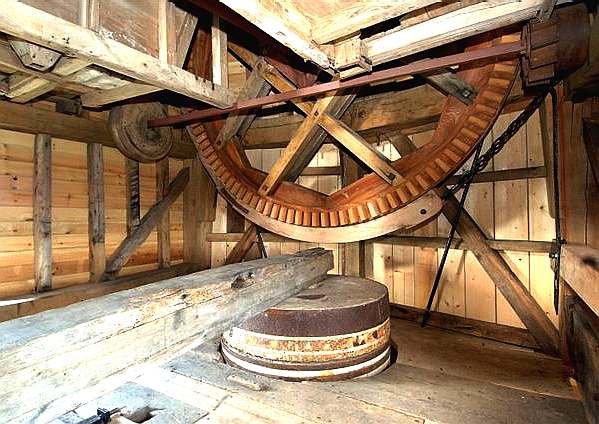
The
wooden gears, that turn an axial wind flow, to drive a vertical drive shaft,
to grind the cereals, using stone wheels.
FACTS
ABOUT THE WINDMILL
- It’s the largest post mill in the country
- It’s the tallest post mill in Sussex at 15.5 metres
- Also one of the tallest post mills in the country
- It is the largest hand turned post mill
- Contains the only sweep governor in existence
- Has a unique outer roundhouse
- Is the landmark that gives the village of Windmill Hill its name
The restoration of the windmill at Windmill Hill:
- Was made possible with a grant of £577,000 from the Heritage Lottery Fund
- Started in 2003 and was largely completed by 2006
- Used authentic repairs wherever possible
- Was the largest and most ambitious mill restoration in the UK
- Used 3D computer modelling to assess stresses on key components
- Led to the development of the Automatic Turning Device (ATD)
The restoration of the milling machinery:
- Was made possible because of a further grant from the Heritage Lottery Fund
- Started in 2013 and was largely completed by 2016
CHAPTERS
|
The Industrial
Revolution
|
|
|
Electricity and Magnetism
- Electric
Lighting Acts 1882 - 1909
|
|
|
Let there be light,
glass bulbs to LEDs
|
|
|
Public supply
|
|
|
Rural supply
|
|
|
Lime Park
|
|
|
Generating station 1982/3
|
|
|
Generating station – Power House,
36 hp National Gas engine
|
|
|
Honeysett
Brothers - Electric Bakers & Confectioners, Gardner Street
|
|
|
Flour
from the millers at Windmill Hill (Trust), tallest post
windmill, UK
|
|
|
Archaeology – Machinery
|
|
|
Archaeology – Boiler Room
|
|
|
Archaeology – Batteries
|
|
|
Stabling,
horses, carriages & blacksmiths - The Old Rectory
- conversion
|
|
|
Sussex Express & Kent Mail Oct 1913
- cooking demonstrations
|
|
|
Coal deliveries &
plan of building
|
|
|
Map of Herstmonceux
|
|
|
The Sussex Industrial Archaeology Society
|
|
|
The County Archaeologist
|
|
|
The chauffeur’s daughter
|
|
|
The engineer’s son
|
|
|
The Department for Culture Media & Sport
(DCMS)
|
|
|
English Heritage & Monument
At Risk Protection Programmes MARS
|
|
|
Sussex Express
December 1999
|
|
|
Archaeology South
East, London University, Survey & Report 1999
|
|
|
Generating Works -
Instructions 1911
|
|
|
Amberley
Museum, Arundel, West Sussex
|
|
|
The rise of
renewables & climate cooling
|
|
|
UNESCO World Heritage Convention
|
|
|
Site
Restoration and Development Proposals - Phases - 3D
VR
|
ONE -
TWO -
THREE -
FOUR - FIVE |
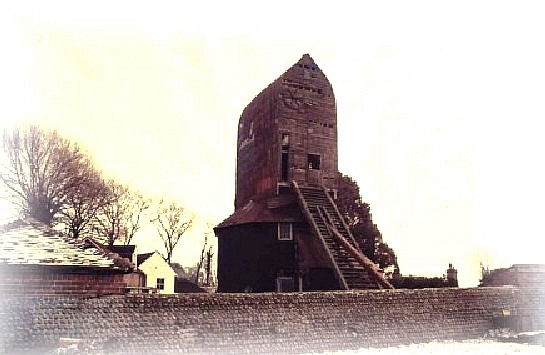
On
the verge of collapse, just like the generation station at Herstmonceux
in 1981.
If
you know of any information that may help us complete this story, please get in
touch.
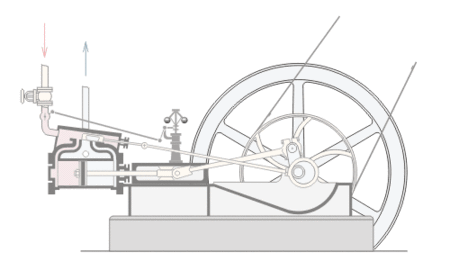
|
